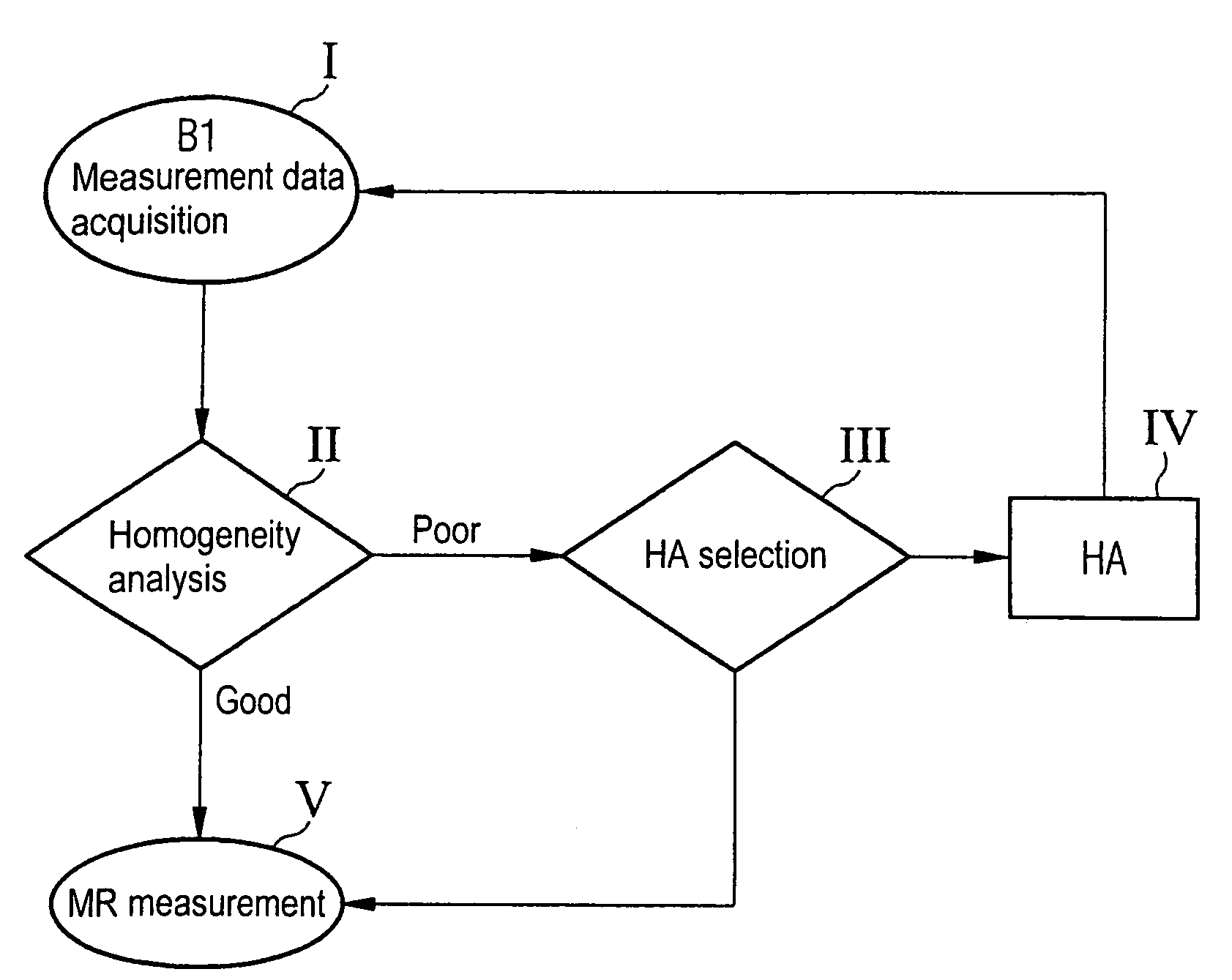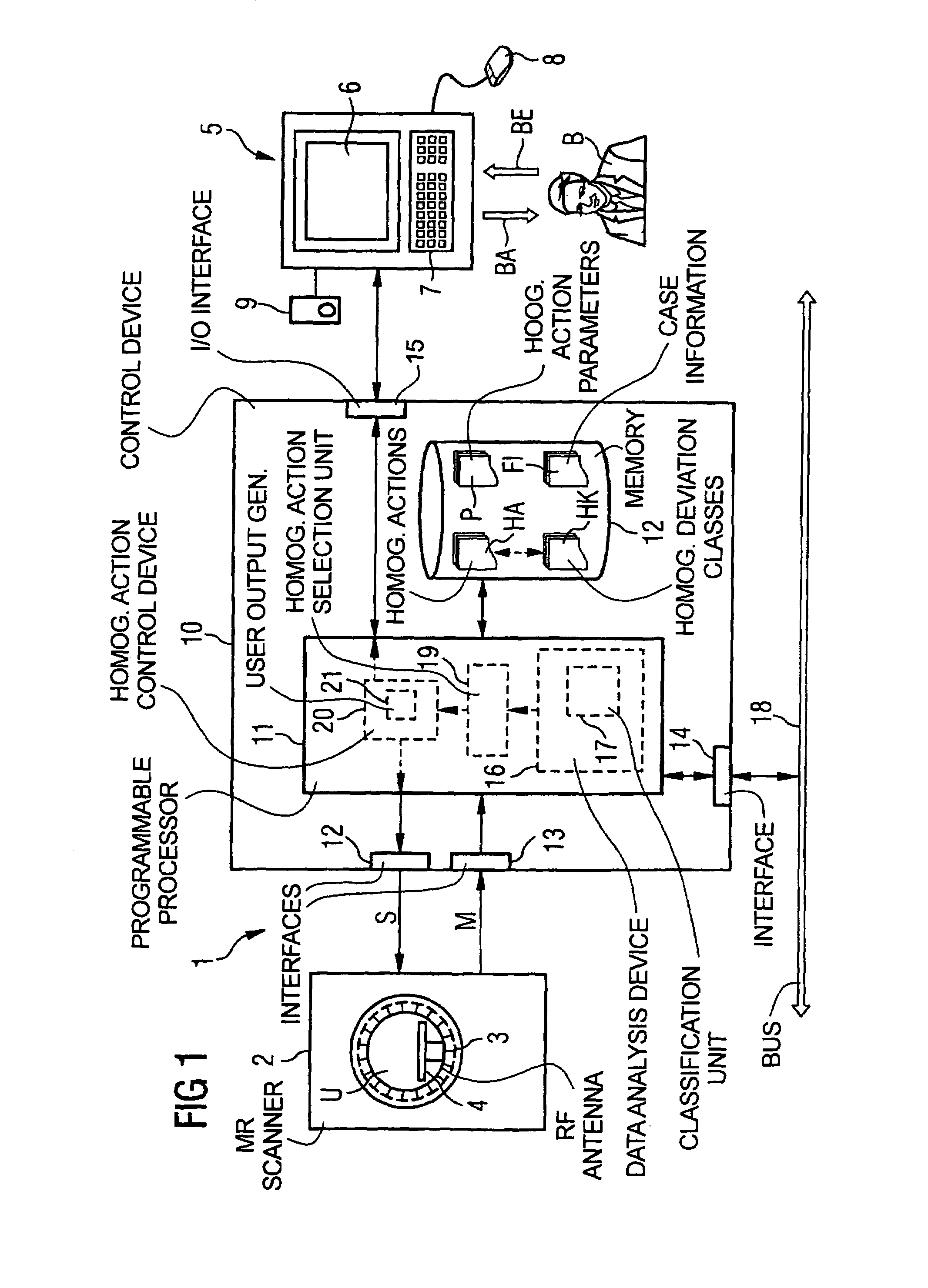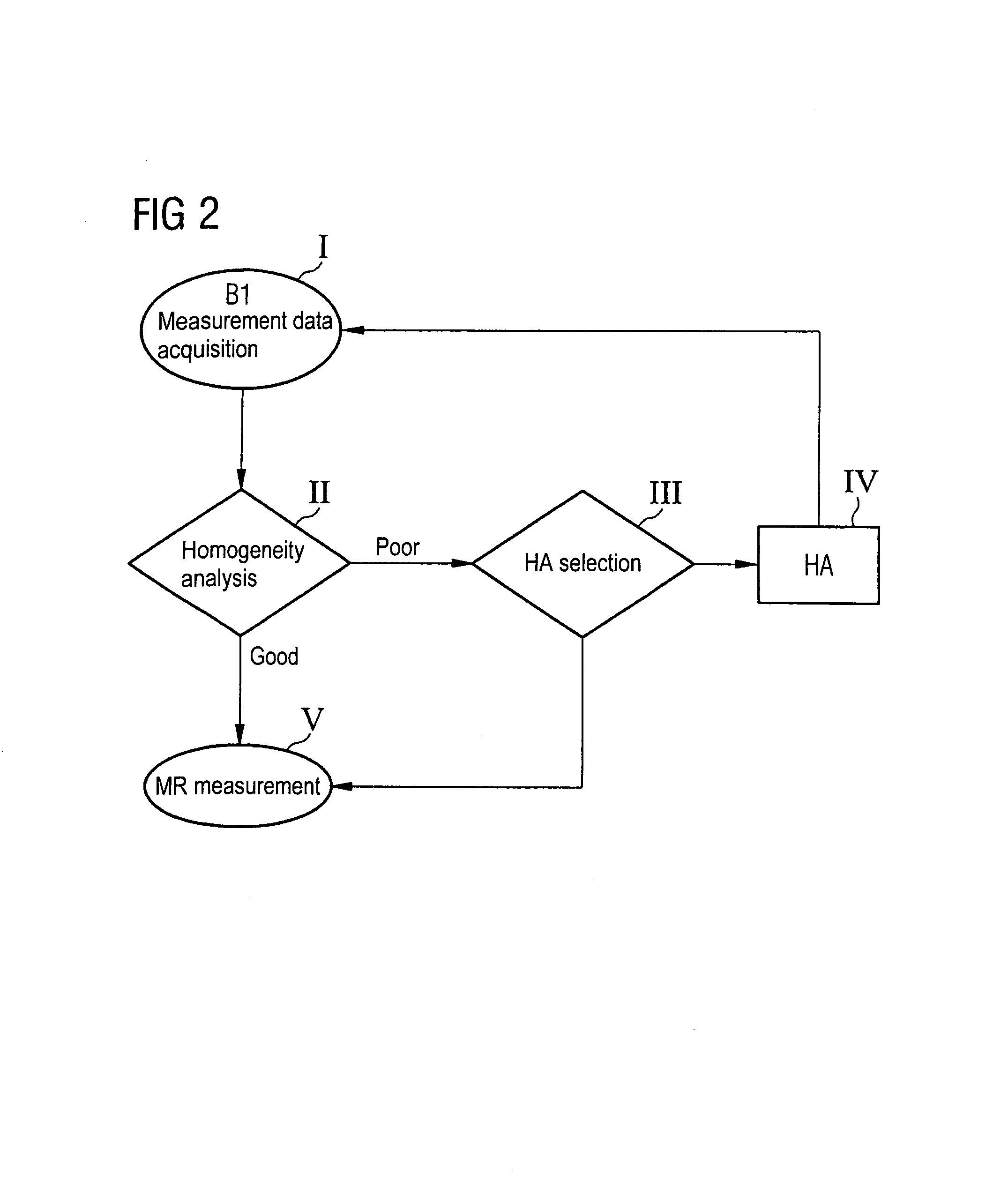Method and magnetic resonance system for homogenizing the B1 field
a magnetic resonance and field technology, applied in the field of method for can solve the problems of inability to perform certain mr procedures, insufficient image quality, inability to perform functional imaging or spectroscopy, etc., and achieve the effect of sufficient homogenizing the b1 field in a fast and safe manner
- Summary
- Abstract
- Description
- Claims
- Application Information
AI Technical Summary
Benefits of technology
Problems solved by technology
Method used
Image
Examples
Embodiment Construction
[0058]FIG. 1 shows an exemplary embodiment of a magnetic resonance system 1 with which an implementation of the inventive method is possible. This magnetic resonance examination system 1 has a scanner 2 in which a patient is positioned on a bed 4 in an annular basic field magnet (not shown). A radio-frequency antenna 3 for emission of the RF pulses into an examination volume U around the patient is located within the basic field magnet.
[0059]In this exemplary embodiment, the radio-frequency antenna 3 is formed by a number of antenna elements that can be individually activated via separate transmission channels. The design can correspond, for example, to the design cited in German OS 101 24 465. Apart from the special design of the antenna 3 and the necessary components for separate activation of the individual antenna elements, the scanner 2 can be conventional. Since widely varied homogenization actions can be used within the inventive method, the method in principle can be used wi...
PUM
 Login to View More
Login to View More Abstract
Description
Claims
Application Information
 Login to View More
Login to View More - R&D
- Intellectual Property
- Life Sciences
- Materials
- Tech Scout
- Unparalleled Data Quality
- Higher Quality Content
- 60% Fewer Hallucinations
Browse by: Latest US Patents, China's latest patents, Technical Efficacy Thesaurus, Application Domain, Technology Topic, Popular Technical Reports.
© 2025 PatSnap. All rights reserved.Legal|Privacy policy|Modern Slavery Act Transparency Statement|Sitemap|About US| Contact US: help@patsnap.com



